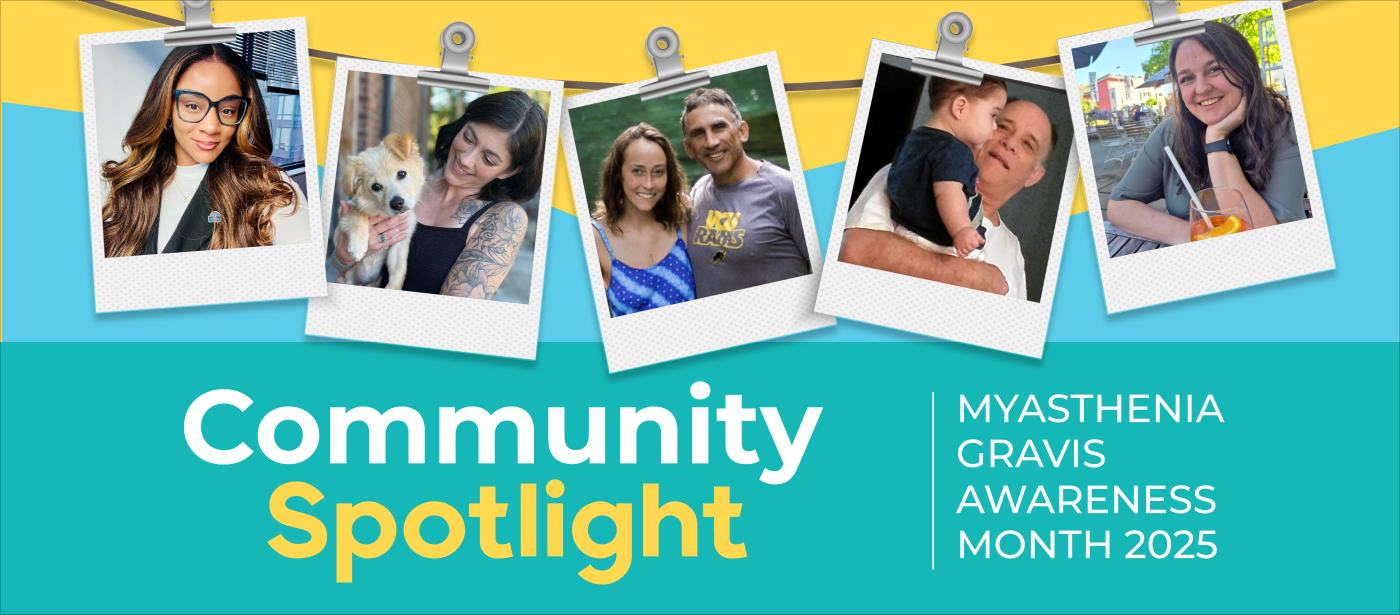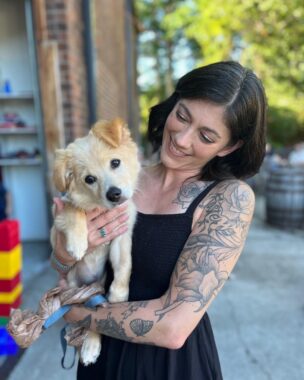The long journey to diagnosing my seronegative myasthenia gravis


Kristina Kelly holds her dog Noah. (Courtesy of Kristina Kelly)
This is Kristina Kelly’s story:
It took five neurologists, five years, and a lot of being told “but your labs are normal” before I was finally diagnosed with seronegative myasthenia gravis (MG). Like so many others, my journey to diagnosis was messy, frustrating, and full of medical gaslighting.
MG affects roughly 20 in 100,000 people worldwide, so most doctors will never see a case in their careers. Seronegative MG is even rarer, meaning the usual antibodies don’t show up in blood work. So while my MG symptoms were screaming, my lab results stayed infuriatingly silent. Providers were quick to label me with chronic fatigue syndrome or a psychosomatic disorder. And let me tell you, nothing says “we believe women” like handing them a mental health pamphlet when their legs stop working properly.
My first symptom was infrequent and mild ptosis (eyelid drooping). I showed a doctor photos, but it was dismissed. After about 16 months, I really started to notice limb weakness. It started small. I’d lean on my husband while walking across a parking lot. I was constantly breaking dishes because my arm wouldn’t lift the plates up and over the sink.
Within three years, I had days when I couldn’t walk unassisted or drive. It would come and go, but, of course, it was never fully present on the days I had neurology appointments. That made it easy for doctors to dismiss me because I didn’t check the textbook boxes. Rare diseases don’t always follow the rules.
The turning point in my diagnosis wasn’t one single “aha” moment. It was a breadcrumb trail of persistence, unexpected luck, and refusing to be brushed off. A gastroenterologist, trying a last-ditch effort to manage my chronic dysmotility, prescribed Mestinon (pyridostigmine bromide). And just like that — poof — my muscle weakness almost disappeared.
Around the same time, a compassionate pulmonologist actually listened to my story and shortness of breath. She ordered a lung function test, which revealed signs of neuromuscular weakness. Encouraged, I sought out my fourth neurologist, who ordered a single-fiber electromyography. It came back abnormal with jitters and blocking.
Despite this evidence, I was told, “Seronegative MG is too rare,” or, “You don’t have ptosis or double vision,” or, my personal favorite, “You’re too strong to have MG.” It was infuriating. But thanks to a seronegative MG support group, I got a recommendation for a neuromuscular neurologist in my state known to take seronegative cases seriously. He reviewed everything, including dozens of other conditions we ruled out, and said without hesitation, “Of course it’s MG. What else would it possibly be?”
I’m lucky that my body responds so well to Mestinon. I’m back working in the garden (cautious of the hot days, of course) and walking my dogs without looking like I’ve been day drinking. I’ve come a long way from falling into freezers at the grocery store and needing a handrail to get out of the bathtub.
For MG Awareness Month, I want people to know that rare doesn’t mean impossible. Invisible doesn’t mean imaginary. And normal labs don’t mean you’re fine. Trust your body. Trust your instincts. And if you’re still undiagnosed, don’t give up. You’re not too sensitive. You’re not overreacting. Stay engaged with the Bionews community and ask for help. You got this!
In recognition of Myasthenia Gravis Awareness Month in June, the Myasthenia Gravis Community Spotlight campaign features a series of stories highlighting the real-life experiences of people affected by myasthenia gravis, written in their own words. Follow us on Facebook, Instagram, or X for more stories like this, using the hashtag #MGSpotlight, or read the full series here.





